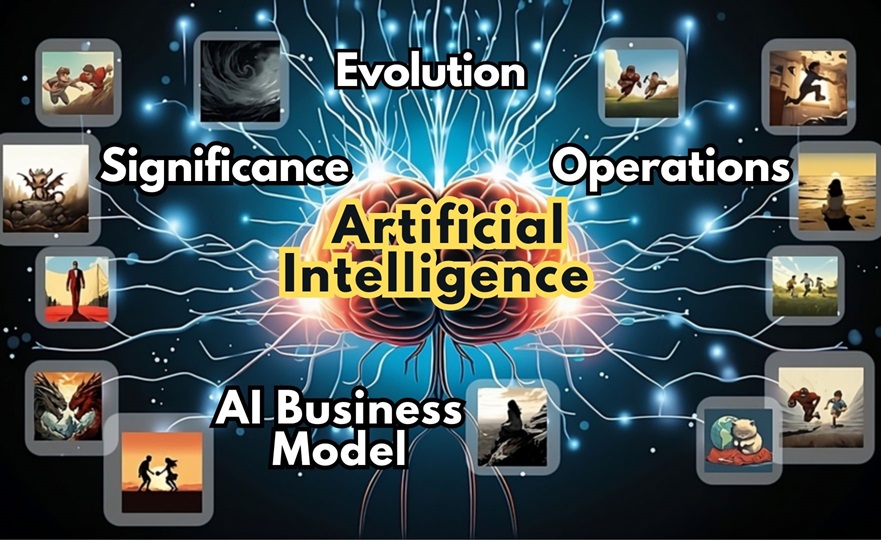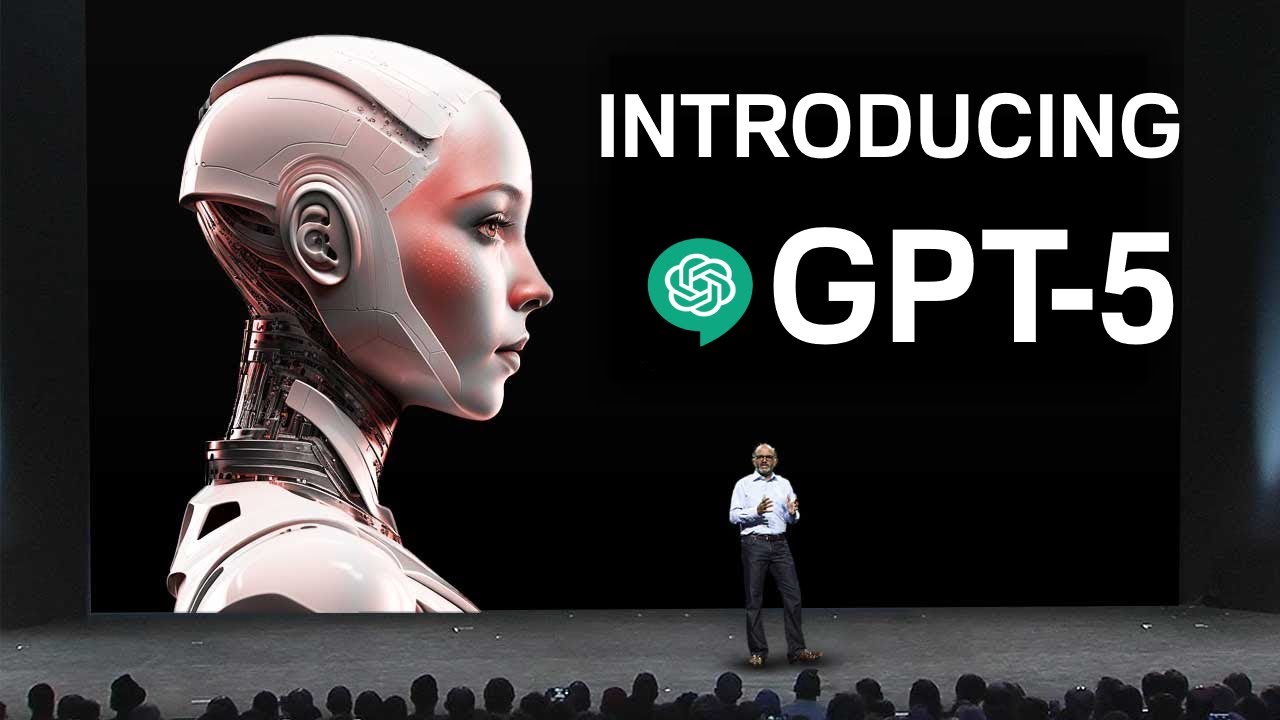Artificial Intelligence or AI: Understanding, Process, Evolution, Operations, Significance, AI Business Model and Top 3 Tools
The marketplace has experienced significant transformation as a result of technological innovations, mostly in terms of productivity and value creation. The most relevant developments are those related to artificial intelligence, or AI. In a nutshell, this technology is the capacity of machines to think critically, analyze, learn, and make decisions in an approach equivalent to the abilities of humans.
In Short:
-
-
-
- What is artificial intelligence, or AI for short?
- A Synopsis Of AI History
- What Is The Process of Artificial Intelligence?
- Develop Reasoning Skills
-
- Machine Learning: Machine learning (ML)
- Depth Learning
- Natural language processing
-
- Why companies prefer AI or give Importance to AI
-
- Expense or Cost Control
- Process automation
- Innovation
- Information Security System – IMS
-
- Top Three Most Used AI Tools in 2024
-
-
Also Read:
Google I/O 2024; What to Expect, Key Announcements, Key Highlights, What’s New in 12 Points?
Can Devin or AI replace Human Programmers? What is AI Software Engineer or Engineering?
What is artificial intelligence, or AI for short?

The modern field of artificial intelligence is a multidisciplinary one with many different methods. Intelligent algorithms and immense amounts of digital data form the foundation of its operations. These parts provide machines the ability to process and understand instructions and data, allowing them to “learn” self-sufficiently. This enables them to think and act logically, behaving in a manner that is similar to that of humans.
A Synopsis Of AI History
The goal of artificial intelligence history has been to create automated machines that can understand information logically and behave logically, much like humans. This goal was pursued by several leaders. It is believed that the development of this technology began in 1956, just after World War II, with the work of scientists such as Alan Turing, who developed the Turing test to see if a computer could have a written conversation with a human – By John McCarthy, Allen Newell, Herbert A and Marvin Minsky.
When AI was initially proposed, it was believed that the main objective of the field was to develop new technologies. We may thank McCarthy for establishing the idea at the expert meeting at Dartmouth College, which effectively turned artificial intelligence into a science, and for defining it as “The science and engineering of creating intelligent machines.”
Artificial intelligence had been studied extensively but had not advanced much until 1964, when the first chatbot was developed. Eliza, as it was called, was limited to having automated conversations since it was powered by keyword-based data and algorithms.
Artificial intelligence (AI) has improved machine intelligence via the use of data and algorithms as new research has been done and the digital revolution has advanced. The previously mentioned progress has facilitated the creation of devices that progressively replicate human thought processes and mental processes.
What Is The Process of Artificial Intelligence?

AI systems require continual access to information in order to facilitate learning. Artificial intelligence is thus the result of integrating these three pillars:
1. Accurate data processing, categorization, and analysis made possible by improved data models and structures.
2. Access to a massive amount of raw or unprocessed data.
3. Dependable and affordably priced computing hardware that enables efficient and rapid data processing.
When one considers its roots, artificial intelligence is obviously the result of the collaborative efforts of big data, cloud computing, and superior data models.
Systems may also learn to recognize, separate, and understand a broad range of objects, patterns, people with disabilities, and reactions by consuming, organizing and analyzing data. The merging of cutting edge algorithms and technology makes this feasible.
Develop Reasoning Skills
Regarding the technological advancements that enable machines to Develop Reasoning Skills
That can be easily understand through 3 major AI or machine skills points
- Machine Learning: Machine learning (ML): which promotes systems to learn on their own and adapt accordingly which is one of the technologies that helps AI achieve the intended outputs.
Thus, through data processing and standard detection, machines may make judgments without the need for the system to be programmed to arrive at a predefined conclusion. Customized suggestions made by streaming systems are an excellent illustration of a machine learning application.
- Depth Learning: Depth learning, a more advanced type of machine learning that produces even more precise and accurate results, enables a more exact and accurate learning process. Since depth learning uses complex neural networks, it replicates a network of neuronal connections in the human brain.
Consequently, the system is able to understand large volumes of data and identify complex patterns. Due to its rapid progress, biometric speech and/or photo recognition software frequently uses it.
- Natural language processing: Artificial intelligence and machine learning have enabled machines to interact and connect with people. The system’s capacity to analyze, understand, identify patterns and spontaneously communicate itself in human language, including speech : causes this to occur.
Natural language processing is especially good at analyzing sentiment, algorithms-based procedures that determine the content of a given text.
Formal examples – Chatbots used in user/consumer service sectors.
As a result, the combination of these technologies enables systems to arrive at precise conclusions that are fully autonomous and supported by actual digital data. This fact encourages the growth of human reason as well as the creation of more precise responses and solutions.
Why companies prefer AI or give Importance to AI

Following factors are involved and describe companies first significance AI choice
- Expense or Cost Control: Task simplification, error correction, and enhanced performance will undoubtedly contribute to lower costs. Streamlined and assisted procedures improve the productivity and performance of collaborators. It therefore decreases expenses, mostly because it allows for the creation of more in a shorter amount of time, and this speed improves the operational efficiency of the organization.
- Process automation: can decrease corporate teams’ effort, speed up dynamics, and provide better results by eliminating human error and inconsistency.
AI’s deeper, objective, and accurate analysis, together with the standardization and cross-referencing of data, prevent subjectivity by establishing findings exclusively on practical, verifiable evidence.
- Innovation: Advanced algorithms can quickly identify, analyze, and react in real time, enabling the creation of a reaction or solution. AI or Artificial intelligence’s innovative approach, businesses may get a competitive edge by identifying unexplored industry trends and capturing public attention.
- Information security system: Voice, facial, and digital recognition technologies are now widely used in many businesses, especially those that handle large volume of sensitive data and require extra security measures or Information Security Standards majorly possible through AI and related fields.
Top Three Most Used AI Tools in 2024
There are multiple industry standardization AI tools used to improve productivity, security, reduce expenses etc.
- Client Assistance Chatbots: The customer service sector answers routine inquiries about everything during the company’s business hours or non-business hours related to payment issues resolutions, helping to find exact delivery status or tracking of packaging etc.
Chatbots kind of application, can provide customers prompt, effective customer support. This is made possible by the replies being created automatically, which adjusts the system’s algorithms based on keywords. These robots improve public happiness, save costs, and facilitate communication.
Examples are Amazon’s product issues resolution ‘Chat Us’ facility, 1MG’s tracking status facility.
- Customer relationship management software or CRM: Mostly Implemented CRM offers solutions that better suited the demands of the intended audience. Effective customer relationship management not only increases the chance of acquiring consumer loyalty but also enhances communication with brand champions.
In addition to centralising the data, this platform allows for data segmentation, which converts the data into relevant information for sales decision-making, personalisation and customer service as well.
It also makes easier to identify response standards, evaluate the efficacy of field collaborators, and develop more effective communication strategies.
- Integrated communication systems or ICS: ICS link several channels, such as email, social media, chat, and the phone/ mobiles to facilitate business collaboration. This solution also significantly improves the company’s interaction with its suppliers, clients, and other audiences by facilitating the fast, safe, and easy communication of information and other types of files.
The use of ICS technologies in contact centers is among the greatest examples. Companies may accelerate and simplify problem-solving by selecting an excellent replacement with a user-friendly interface and useful features.

Discover more from Newz Ticks
Subscribe to get the latest posts sent to your email.






4 thoughts on “Artificial Intelligence; AI: Understanding, Process, Evolution, Operations, Significance, AI Business Model and Top 3 Tools Used in 2024”
Comments are closed.